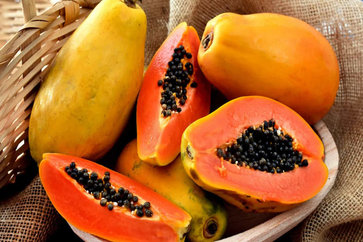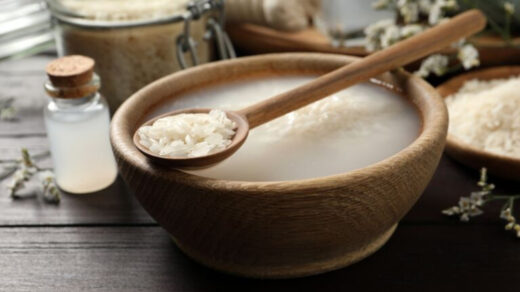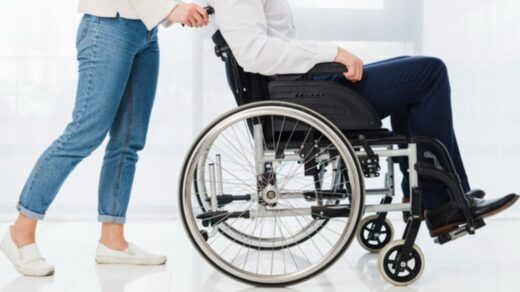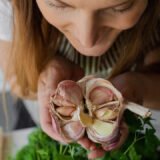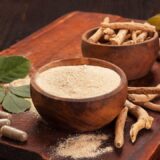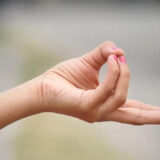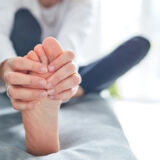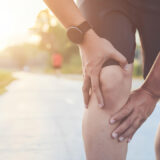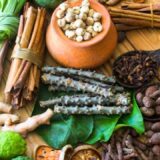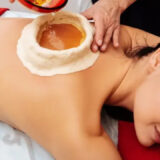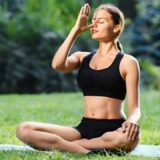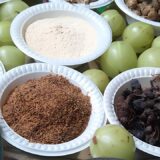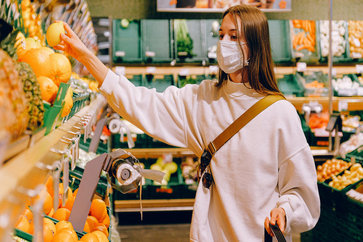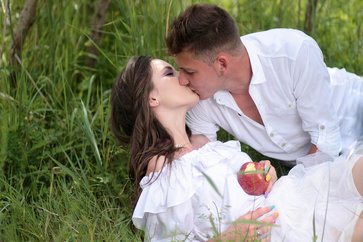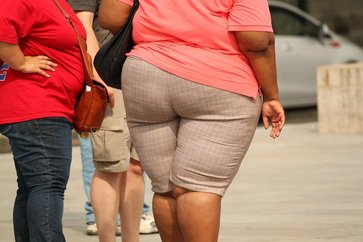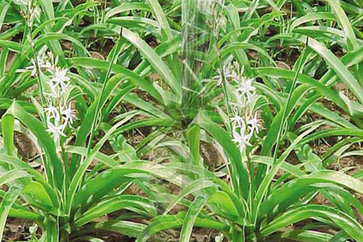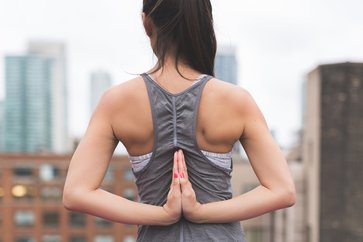Permanent Cure for Eczema in Ayurveda: Revitalizing Skin Health
Eczema or Vicharchika, a term from Ayurveda, refers to one of the most prevalent and troublesome skin conditions classified under Kshudra Kushthas (minor skin diseases). It involves a complex interplay of imbalances in the body’s internal energies or doshas, particularly Kapha. 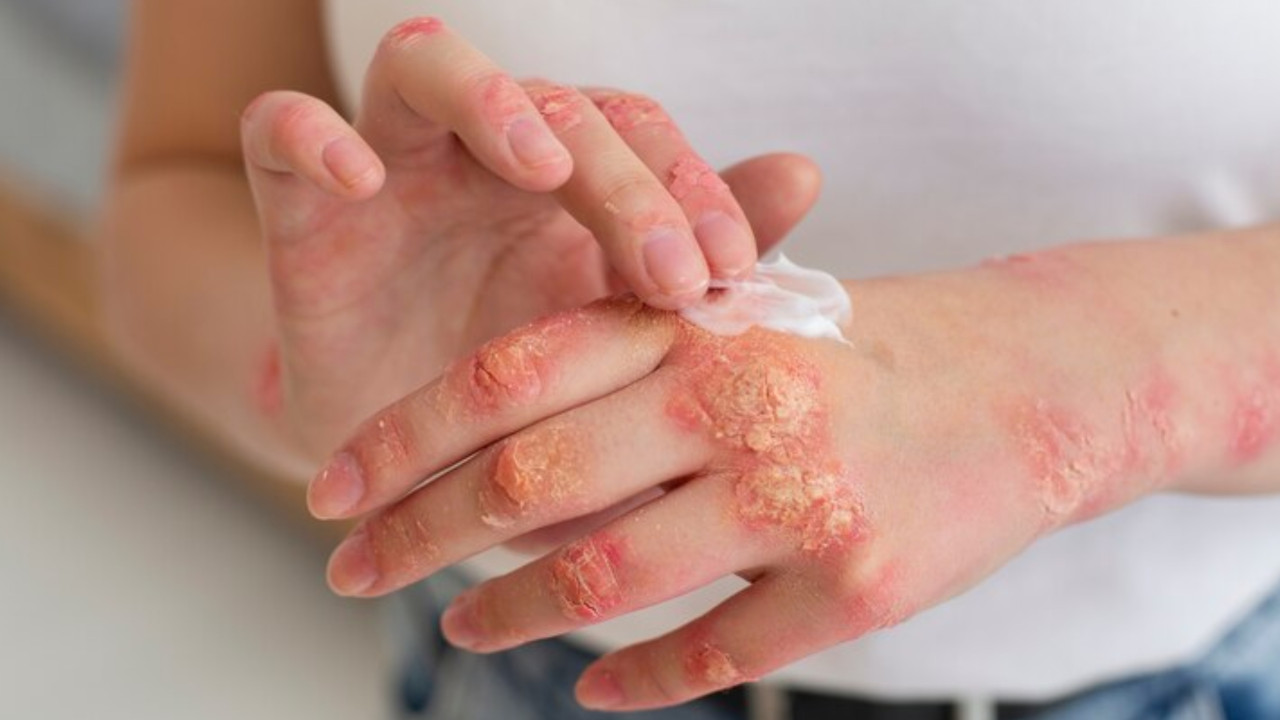
The condition presents with common skin symptoms such as persistent itching (Kandu), the formation of vesicles or small blisters (Pidika), dark discoloration of the affected skin (Shyava Varna), and oozing or discharge from the lesions (Srava).
Modern dermatology typically correlates Vicharchika with eczema, a chronic inflammatory skin condition characterized by itching, redness, and the formation of lesions. The term “eczema,” derived from the Greek word meaning “boil out,” aptly reflects the condition’s tendency to lead to eruptions and fluid discharge.
Eczema is not only a physical ailment but also affects the psychological, social, and emotional well-being of an individual. It can lead to discomfort, disfigurement, and frustration, often impacting one’s daily life and self-esteem.
Therefore, an effective treatment plan must address not just the symptoms but the root cause of the disease, improving overall health and preventing recurrence.
Ayurvedic Perspective on Vicharchika (Eczema)
Ayurveda, the ancient system of natural healing, views skin diseases like Vicharchika as external manifestations of internal imbalances. In Ayurvedic theory, skin conditions are classified into two main categories: Mahakushthas (major skin diseases) and Kshudra Kushthas (minor skin diseases). Vicharchika falls under Kshudra Kushthas, and it is primarily caused by an imbalance in the Tridoshas (the three doshas: Vata, Pitta, and Kapha), with Kapha being the most predominant dosha in this condition. Ayurveda believes that when Kapha is aggravated, it leads to an accumulation of toxins (Ama) in the body, which manifests as skin issues like itching, swelling, and inflammation.
The imbalance not only affects the doshas but also vitiates the Rakta (blood) and Twak (skin), leading to the development of eczema-like symptoms. The skin in Ayurveda is considered an organ of elimination, and the body uses it to expel excess doshas and toxins. When this process is obstructed or overwhelmed, conditions like Vicharchika emerge.
In Ayurveda, the treatment of Vicharchika involves a holistic approach aimed at restoring balance to the doshas, particularly Kapha, and addressing the root cause of the disease. The two main therapeutic approaches in Ayurveda are:
1. Srotoshodhana (Cleansing the channels):
Detoxification therapies, such as Vamana (therapeutic emesis), Virechana (purgation), and Raktamokshana (bloodletting), are used to eliminate toxins from the body and clear the blocked channels. This detoxification is believed to be essential in treating skin diseases like Vicharchika by cleansing the body of accumulated doshas and toxins.
2. Doshashamana (Pacifying the doshas):
This involves using specific herbs, oils, and medicinal formulations to balance the doshas. By restoring harmony in the body, Ayurveda aims to address the underlying causes of skin diseases and promote overall health.
Symptoms of Vicharchika (Eczema)
In Ayurveda, the key symptoms of Vicharchika closely mirror those seen in modern cases of eczema. These symptoms include:
- Kandu (Itching): Persistent and severe itching, often worse at night or in dry weather.
- Pidika (Vesicles): The formation of small boils or pustules filled with fluid, which may rupture and ooze.
- Shyava Varna (Dark Discoloration): The skin may take on a dark or blackish hue due to the stagnation of blood and the accumulation of toxins.
- Srava (Oozing): Fluid or pus oozes from the lesions, leading to further irritation and discomfort.
- Rajyo (Thickened Lesions): Chronic inflammation leads to the thickening of the skin, making it rough and hard.
- Ruksha (Dryness): The affected skin becomes dry, cracked, and rough due to the imbalanced doshas and depletion of natural oils.
- Ruja (Pain): The lesions may cause pain, especially if they become infected or inflamed.
Types of Eczema and Ayurvedic Classification
Eczema can present in various forms based on its underlying causes and clinical manifestations. Modern medicine categorizes eczema into several distinct types, and Ayurveda offers treatment strategies for each based on the doshic imbalance and the severity of the condition.
1. Atopic Dermatitis (Eczema)
Atopic dermatitis, a common form of eczema, is characterized by itchy, weeping, and oozing lesions. It usually occurs in a characteristic distribution, notably on the cheeks, neck, elbow creases, knee creases, and ankles. It is often associated with a family history of allergies or asthma. This condition can be triggered by environmental factors, allergens, or irritants, and it frequently worsens during cold, dry weather or in the presence of stress.
2. Irritant Dermatitis
Irritant contact dermatitis occurs when the skin is repeatedly exposed to harsh chemicals or excessive washing, leading to skin damage and inflammation. It commonly affects individuals who work with cleaning agents, industrial chemicals, or detergents. The skin becomes red, itchy, and can sometimes crack or peel. Unlike allergic contact dermatitis, irritant dermatitis is caused by a direct damaging effect of the irritant, rather than an immune system response.
3. Allergic Contact Dermatitis
This condition develops after the skin has been exposed to an allergen multiple times. The body’s immune system becomes sensitized to the substance, and upon subsequent exposure, it triggers an allergic reaction, leading to a red, itchy rash. Common allergens include nickel, fragrances, certain plants (like poison ivy), and latex. The rash typically appears at the site of contact with the allergen and may include swelling, redness, and blisters.
4. Stasis Dermatitis
Stasis dermatitis is commonly seen in individuals with poor circulation in the lower legs, often due to venous insufficiency (when the veins in the legs fail to properly return blood to the heart). The affected area usually involves swollen lower legs, and the skin can become red, dry, and scaly. If untreated, stasis dermatitis can progress to ulceration and more severe skin changes. People with varicose veins are often at higher risk for stasis dermatitis.
5. Fungal Infections
Fungal infections, such as ringworm or tinea corporis, can mimic eczema in their presentation, with itchy, red, scaly lesions. These infections are caused by various types of fungi that infect the skin, and they often present in ring-shaped patterns or patchy areas. Unlike eczema, fungal infections can be treated with antifungal medications.
6. Scabies
Scabies is caused by an infestation of the skin by the human itch mite (Sarcoptes scabiei), which burrows into the skin and causes intense itching and red, bumpy rashes. It can resemble eczema due to the itching and inflammation, but scabies is specifically linked to direct contact with an infected person. The rash is most commonly found in areas such as the webbing of fingers, wrists, elbows, and genital areas. Scabies requires specific treatment with topical permethrin or oral ivermectin to eradicate the mite.
7. Dyshidrotic Eczema
Dyshidrotic eczema, also known as pompholyx, is a type of eczema that affects the hands and feet, producing tiny blisters filled with fluid. These blisters are often very itchy and can cause the skin to peel once they rupture. The cause of dyshidrotic eczema is not well understood, but it can be triggered by stress, exposure to allergens, or sweating. The condition is more common in young adults and is often recurrent.
8. Lichen Simplex Chronicus (Neurodermatitis)
Lichen simplex chronicus is a type of eczema that results from chronic scratching or rubbing of the skin. The affected skin becomes thickened, rough, and sometimes hyperpigmented due to long-term irritation. It is commonly seen on areas that are easy to scratch, such as the shins, neck, and scalp. The condition often leads to a cycle of itching and scratching that exacerbates the rash.
9. Nummular Eczema
Nummular eczema is characterized by the appearance of round, coin-shaped patches of irritated, scaling skin. It is often seen in the lower legs, particularly in older adults, and is typically associated with dry skin. The lesions may appear suddenly and can be very itchy. It is more common in people with a history of dry skin or atopic dermatitis.
10. Xerotic Eczema
Xerotic eczema, or dry skin eczema, occurs when the skin becomes excessively dry and cracked, leading to inflammation, itching, and even oozing. This is particularly common during the colder months when the air is dry, but it can also be exacerbated by frequent washing or use of harsh soaps. The skin becomes rough, flaky, and can crack, potentially leading to further irritation and infection.
11. Seborrheic Dermatitis
Seborrheic dermatitis is a chronic, recurrent skin condition that affects areas with a high concentration of sebaceous (oil) glands, including the scalp, face, ears, and chest. It can present as red, flaky, oily patches or dandruff on the scalp. In infants, it is commonly referred to as cradle cap and appears as a greasy, yellowish rash on the scalp or behind the ears. In adults, it can also cause itching and scaling in the affected areas, and it is often associated with stress and other triggering factors like cold weather or hormonal changes.
Dermatological Complications of Eczema
Eczema, also known as Vicharchika in Ayurveda, is not only a physical condition but also carries potential dermatological complications that can significantly impact a person’s overall health. These complications can be both direct, stemming from the condition itself, or secondary, resulting from the inflammation and skin damage caused by eczema. Some of the key dermatological complications include:
1. Infection:
Eczema can cause the skin’s protective barrier to weaken, making it more susceptible to bacterial, viral, or fungal infections. Staphylococcus aureus and Herpes simplex are commonly found in eczema-affected skin, leading to further inflammation and complications such as impetigo or eczema herpeticum. Open sores, oozing lesions, and scratching can introduce pathogens, leading to secondary infections. The infection exacerbates the condition, causing more severe itching, redness, and sometimes systemic symptoms like fever.
2. Ide eruption:
The term Ide eruption refers to the development of new skin lesions or exacerbation of existing eczema due to an external agent, such as medications, allergens, or irritants. In cases where topical treatments are used incorrectly or when allergens come in contact with the skin, new rashes can appear or worsen, causing increased discomfort and inflammation. These eruptions can delay the healing process and complicate the management of the condition.
3. Contact Dermatitis:
Contact dermatitis is a common complication of eczema, often resulting from skin’s exposure to irritants or allergens. Individuals with eczema are more prone to contact dermatitis, as their skin is already inflamed and sensitive. Triggers include harsh chemicals, soaps, fragrances, metals (such as nickel), and even certain fabrics. The rash often presents as red, itchy, and inflamed patches at the site of exposure, further irritating the skin and aggravating the symptoms of eczema.
4. Erythroderma:
Erythroderma is a rare but serious dermatological complication that involves widespread redness and scaling of the skin. It can occur when eczema becomes severely inflamed and affects a large surface area of the body. The condition can lead to systemic symptoms, such as fever, chills, and fluid imbalances, and may require hospitalization for management. Erythroderma can also cause hair loss, and if left untreated, it can lead to life-threatening complications like sepsis.
Psychological Complications of Eczema
Eczema is not just a physical condition; it also takes a significant toll on an individual’s mental health. The constant discomfort, visible nature of the rash, and the stigma associated with skin diseases can lead to various psychological complications:
1. Anxiety:
The persistent itching, pain, and discomfort associated with eczema can lead to anxiety, particularly in social situations. The fear of outbreaks, flare-ups, and the unpredictability of the condition can make individuals feel on edge. This can be compounded by the physical appearance of eczema lesions, which may cause embarrassment or self-consciousness, leading to avoidance of social interactions. For many individuals, the anxiety can intensify during flare-ups, exacerbating the psychological burden of the condition.
2. Depression:
The chronic nature of eczema, coupled with its impact on daily life, can contribute to depression. When eczema symptoms are severe or persistent, individuals may experience feelings of helplessness, frustration, and low self-esteem. The inability to manage the condition effectively can lead to a sense of isolation, and in some cases, the stress of living with a chronic condition may trigger clinical depression. The relationship between the physical symptoms of eczema and psychological distress underscores the need for comprehensive treatment that addresses both aspects.
Social Complications of Eczema
Beyond the direct physical and mental health implications, eczema also carries significant social complications. These complications can affect an individual’s relationships, work life, and overall quality of life:
1. Wage Loss:
The physical discomfort, coupled with frequent flare-ups and the need for medical treatments, may affect an individual’s ability to work. In severe cases, the visible nature of eczema or the debilitating nature of flare-ups may result in missed work days, reduced productivity, or even job loss. For some individuals, managing the condition might involve long-term treatments or hospitalizations, further adding to the financial burden and resulting in wage loss. This can be particularly challenging for people in jobs that require physical appearance or manual labor.
2. Debility:
Debility refers to a state of physical weakness and reduced functionality. Eczema, particularly in its severe or chronic forms, can lead to significant debility. The constant itching, skin inflammation, and discomfort can reduce the individual’s ability to perform daily tasks and affect their overall quality of life. Individuals may find it difficult to engage in physical activities or even manage simple tasks such as dressing or personal hygiene. This physical limitation can result in feelings of frustration and contribute to a loss of independence.
3. Social Ostracism:
The visible nature of eczema often leads to social ostracism, as people may make judgments based on the appearance of the skin. The rash, swelling, and lesions associated with eczema can lead to negative perceptions, teasing, or exclusion from social activities. In extreme cases, individuals with severe eczema may experience discrimination or stigmatization, which can lead to withdrawal from social engagements, isolation, and lowered self-esteem. These social challenges can exacerbate the mental health impact of the disease, contributing to further anxiety and depression.
Ayurvedic Treatment for Vicharchika
Ayurvedic treatment for Vicharchika is individualized, as it takes into account the patient’s unique constitution (Prakriti), the doshic imbalance, and the stage of the disease. Ayurveda divides eczema treatment into acute, sub-acute, and chronic stages, with each requiring a different approach.
1. Acute Eczema (Vata-Pitta Predominance)
In acute cases, the primary focus is on calming inflammation and reducing intense itching. Internal and external therapies are prescribed to soothe the skin.
- Internal Therapies: Manjisthadi Kwath (an herbal decoction) is used for its blood-purifying and anti-inflammatory properties. Vilvadi Gulika (a tablet) is also recommended for internal detoxification.
- External Therapies: A mixture of Triphala Churna (a blend of three fruits) with water is used for washing the affected areas to remove toxins and soothe irritation. Applying Shatadhauta Ghrita, a special clarified butter, provides deep nourishment to the skin and promotes healing.
2. Sub-Acute Eczema (Pitta-Kapha Predominance)
Sub-acute eczema is marked by moderate inflammation and the formation of vesicles. Ayurveda emphasizes therapies that balance the Pitta and Kapha doshas while alleviating dryness and itching.
- Internal Therapies: Cooling and anti-inflammatory herbal decoctions like Patolkaturohinyadi Kwath are prescribed. Triphala Guggulu helps in detoxification and reducing inflammation.
- External Therapies: Drying treatments such as herbal poultices or oils are used to reduce the oozing and to calm the inflammation.
3. Chronic Eczema (Vata-Kapha Predominance)
Chronic eczema often presents with thickened, dry, and itchy skin. The goal of treatment is to balance both Vata and Kapha, hydrate the skin, and reduce inflammation.
- Internal Therapies: Mahatikta Ghrita and Kalyanaka Ghrita are used to balance the doshas and cleanse the blood.
- External Therapies: Nimba Kalka (neem paste) and Shatadhauta Ghrita are applied to reduce inflammation, moisturize the skin, and prevent further damage.
Differential Diagnosis of Eczema
Eczema (also known as Vicharchika in Ayurveda) is a common and chronic skin condition that shares symptoms with several other dermatological diseases. Due to its variable presentation and the similarity in clinical features with other conditions, it is crucial to differentiate eczema from other skin disorders for accurate diagnosis and effective treatment. The following conditions should be considered in the differential diagnosis of eczema:
1. Psoriasis
Psoriasis is a chronic autoimmune skin disorder that shares several symptoms with eczema, including red, inflamed, and itchy skin. However, there are key differences between eczema and psoriasis:
- Lesion Appearance: In psoriasis, the lesions are often raised, thickened, and covered with silvery-white scales. These scales are a hallmark of psoriasis and are absent in eczema, where the lesions are typically more inflamed and oozing.
- Location: Psoriasis commonly affects areas like the elbows, knees, scalp, and lower back. While eczema can also affect these areas, it often appears in flexural areas (e.g., inside of elbows, behind the knees) and around the eyes or on the hands and feet.
- Nail Involvement: Psoriasis frequently causes pitting or separation of the nails, which is not typically seen in eczema.
- Flare Triggers: Psoriasis flare-ups are often triggered by stress, infections, or trauma (Koebner phenomenon), while eczema may be more commonly exacerbated by irritants, allergens, or environmental factors like temperature changes.
2. Scabies
Scabies is caused by an infestation of the Sarcoptes scabiei mite, which burrows into the skin, causing intense itching and a characteristic rash. The primary difference between eczema and scabies lies in the cause and pattern of the rash:
- Lesion Distribution: Scabies often presents with tiny red bumps, burrows, or vesicles in areas like the between the fingers, wrists, elbows, genital region, and palms. In contrast, eczema lesions can occur almost anywhere on the body, but they are more likely to appear in flexural areas (e.g., elbow creases, knee creases).
- Itching: The itching in scabies is often more severe and can be worse at night due to the activity of the mite.
- Diagnosis: Scabies is diagnosed by examining skin scrapings under a microscope to identify the mite or its eggs, whereas eczema is diagnosed primarily based on clinical symptoms and history.
3. Tinea Infections (Fungal Infections)
Tinea infections are caused by dermatophytes, which are fungi that infect the skin. Tinea infections, such as ringworm, can sometimes be mistaken for eczema because both present with red, itchy, scaly patches. However, there are important distinguishing features:
- Lesion Appearance: Tinea infections typically present with ring-shaped lesions with a raised, red edge and a clear center, resembling a “ring.” Eczema, on the other hand, tends to have more diffuse and inflammatory lesions with oozing or scaling.
- Location: Fungal infections often affect areas like the scalp, feet (athlete’s foot), and groin, while eczema can affect a wide range of body areas.
- Response to Antifungal Treatment: Tinea infections will typically improve with antifungal treatment, whereas eczema responds to topical corticosteroids or other anti-inflammatory medications.
- Skin Scraping: Tinea infections can be diagnosed by skin scraping and fungal culture, which will show the presence of fungal elements under the microscope, whereas eczema does not present with fungal elements.
4. Folliculitis
Folliculitis refers to the inflammation of hair follicles, often caused by bacterial infections (usually Staphylococcus aureus), but it can also be triggered by fungal infections or ingrown hairs. The clinical presentation of folliculitis can overlap with eczema, particularly when there is itching and inflammation:
- Lesion Appearance: Folliculitis typically presents with pustules or papules around hair follicles, often on the scalp, back, or buttocks, while eczema lesions are more widespread and tend to involve larger areas of skin.
- Itching: Both conditions cause itching, but folliculitis is more likely to have pustular lesions with yellowish discharge or crusting, whereas eczema can present with dry, flaky skin, vesicles, or oozing.
- Treatment Response: Folliculitis typically improves with antibiotics or antifungal treatments, depending on the cause, while eczema responds to topical steroids and moisturizers.
5. Urticaria (Hives)
Urticaria, also known as hives, is characterized by raised, red, itchy welts on the skin that can appear suddenly. Although both eczema and urticaria cause itching and can be triggered by allergens, they are distinct conditions:
- Lesion Appearance: Urticaria lesions are raised and swollen, with well-defined borders, and often blanch (turn white) when pressed. In contrast, eczema lesions are inflammatory, often presenting with redness, scaling, and dryness, without the typical raised welts of urticaria.
- Duration of Lesions: Urticaria lesions typically appear suddenly and last for a short period (a few hours to a day), while eczema lesions can persist for a longer duration, often weeks or even months.
- Triggers: Urticaria is often triggered by allergic reactions, infections, or stress, while eczema is more commonly associated with exposure to irritants, allergens, or changes in environmental conditions.
6. Pemphigus and Pemphigoid
Pemphigus and pemphigoid are rare autoimmune blistering disorders that can sometimes be confused with eczema due to the presence of blisters and inflamed skin:
- Pemphigus: In pemphigus vulgaris, blisters form on normal or erythematous skin, and they rupture easily, leading to erosions and painful ulcerations. The blisters in pemphigus are often flaccid and fragile, unlike the more robust vesicles in eczema. Pemphigus often affects the mucous membranes, such as the mouth and throat, which is a key distinguishing feature.
- Pemphigoid: Bullous pemphigoid presents with tense blisters and is typically seen in older individuals. The blisters are more resistant to rupture than in pemphigus, and the distribution tends to be on the trunk and limbs, which can overlap with eczema’s distribution.
- Diagnosis: Both pemphigus and pemphigoid require skin biopsy for diagnosis, revealing autoimmune blistering with intercellular or subepidermal cleavage, whereas eczema is diagnosed based on clinical history and lesion appearance.
Top 13 Ayurvedic Medicine for Vicharchika (Eczema)
In Ayurveda, internal medications play a crucial role in treating Vicharchika (eczema), particularly when the condition is chronic. These medications aim to balance the vitiated doshas, primarily Kapha and Pitta, which are the primary contributors to skin inflammation, itching, and oozing. Internal therapies not only help alleviate the external symptoms of eczema but also work on restoring the body’s internal balance, thereby preventing the recurrence of the disease.
1. Mahatiktaka Ghrita
Mahatiktaka Ghrita is a potent ghee-based preparation, widely used in the treatment of chronic skin conditions like Vicharchika. This formulation contains bitter (Tikta) herbs, which are known for their detoxifying and anti-inflammatory properties. The bitter taste helps to pacify Kapha and Pitta, reduces toxins (Ama) from the body, and cools down excessive heat or inflammation in the skin. It also improves the quality of the skin, making it less prone to future eruptions.
2. Tiktaka Ghrita
Similar to Mahatiktaka Ghrita, Tiktaka Ghrita is another ghee-based preparation but with a stronger emphasis on bitter herbs. The bitter taste is believed to have a cleansing effect on the blood and helps to regulate the excess heat caused by Pitta. It is particularly useful when the condition involves itching and discoloration of the skin, as the Pitta pacifying nature of this ghee formulation helps alleviate these symptoms effectively.
3. Kalyanaka Ghrita
Kalyanaka Ghrita is another Ayurvedic ghee formulation used in the treatment of chronic skin diseases like eczema. It combines several healing herbs that not only detoxify the body but also nourish the skin from within. It helps to improve the functioning of liver and blood circulation, both of which are vital in managing inflammatory skin conditions. It is especially effective when eczema symptoms are accompanied by dryness and cracking of the skin.
4. Tiktaka Kwath Tablet
Tiktaka Kwath is a well-known Ayurvedic decoction used to treat conditions like eczema. The Tiktaka (bitter) herbs included in this decoction help detoxify the blood, expel excess moisture, and balance Kapha dosha. Tiktaka Kwath Tablets are used in a convenient form to treat skin conditions that involve inflammation, itching, and oozing.
5. Mahatiktaka Kwath Tablet
The Mahatiktaka Kwath Tablet is similar to the Tiktaka Kwath but has a stronger bitter composition. It is especially helpful in the treatment of chronic eczema, where there is a need to pacify Kapha and Pitta more intensely. This tablet is particularly beneficial for long-term treatment as it helps in the continuous detoxification of the body and reduces the chances of the recurrence of the condition.
6. Aaragwadhadi Kwath Tablet
Aaragwadhadi Kwath is an Ayurvedic formulation made from Aaragwadh (also known as Tinospora cordifolia, or Guduchi). It has immunomodulatory and anti-inflammatory properties. It helps in reducing itching, swelling, and discharge in eczema. It also balances Kapha and Pitta and strengthens the immune system, which is often compromised in individuals with eczema.
7. Guloochyadi Kwath Tablet
Guloochyadi Kwath is a herbal formulation containing Guloochi (Guduchi), a powerful herb known for its antioxidant and anti-inflammatory properties. It helps improve skin health by purifying the blood, improving circulation, and promoting cell regeneration. It also plays a key role in calming down the skin’s irritation and preventing further flare-ups of eczema.
8. Kaishora Guggulu
Kaishora Guggulu is an Ayurvedic herbal formulation widely used for detoxifying the body and treating chronic skin diseases, including eczema. This formulation contains herbs like Guggulu and Triphala, which are effective in clearing toxins and improving the digestive system. It helps balance Kapha and Pitta doshas and is particularly useful for managing itching, inflammation, and discoloration of the skin.
9. Haridra Khandam
Haridra Khandam, which contains Turmeric (Haridra), is another excellent remedy for treating eczema. Turmeric has well-documented anti-inflammatory, antibacterial, and antifungal properties, which make it a cornerstone of Ayurvedic skin treatments. Haridra Khandam helps purify the blood, balance doshas, and reduce skin inflammation, making it a powerful remedy for chronic eczema cases that involve dark patches and oozing lesions.
10. Dooshivishari Gulika
Dooshivishari Gulika is an Ayurvedic formulation used to treat toxins (Dooshivisha) accumulated in the body, which are believed to be a primary cause of chronic skin diseases like eczema. It helps in detoxifying the blood and lymphatic system, thereby reducing the symptoms of itching, inflammation, and oozing associated with eczema.
11. Rajanyadi Churnam
Rajanyadi Churnam is an Ayurvedic herbal powder formulation used to treat various skin conditions, including eczema. This churnam is particularly effective in balancing the doshas, especially Kapha and Pitta, and promoting healing of the skin. It also helps in cleansing the blood, which can contribute to a reduction in symptoms like vesicles, inflammation, and dark discoloration of the skin.
12. Madhusnuhirasaynam
Madhusnuhirasaynam is a lesser-known but highly effective Ayurvedic formulation used for its antioxidant, anti-inflammatory, and immunomodulatory effects. It helps to rejuvenate the skin and detoxify the body, thereby reducing the chronic symptoms of eczema. The herbal ingredients in Madhusnuhirasaynam have also been found to support liver and kidney function, both of which are important in the body’s ability to eliminate toxins.
Lifestyle and Dietary Recommendations
In addition to Ayurvedic treatments, lifestyle, and dietary modifications play an essential role in managing eczema. These changes aim to prevent the aggravation of doshas and promote overall health.
Dietary Changes
- Avoid Excessive Sour, Salty, and Spicy Foods: These foods are believed to increase Pitta and Kapha, leading to skin irritation. Instead, opt for cooling and detoxifying foods like cucumbers, leafy greens, and coconut.
- Incorporate Bitter and Astringent Foods: Foods like neem, turmeric, amla (Indian gooseberry), and bitter gourd are known for their blood-purifying and anti-inflammatory effects. These help in managing eczema by balancing the doshas and removing toxins.
Lifestyle Modifications
- Minimize Exposure to Irritants: Avoid harsh chemicals, detergents, and excessive heat, which can aggravate the skin and worsen symptoms.
- Use Cotton Clothing: Choose soft, breathable fabrics like cotton to prevent further irritation and allow the skin to breathe.
- Maintain Hydration: Drink adequate water and use moisturizing oils and creams to keep the skin hydrated, which is crucial for healing.
Mental Health
Stress is a significant trigger for eczema flare-ups, and managing stress is vital in controlling the condition. Practices like yoga, meditation, and deep breathing exercises can help calm the mind, reduce inflammation, and enhance immune function.
Case Studies
Case 1: Vicharchika (Eczema) Treatment
Patient Profile:
- Gender: Female
- Age: 53 years
- Prakriti (Constitution): Pitta-Kapha predominant
- Chief Complaints (C/O):
- Swelling on both feet
- Itching on the skin of the feet
- The patient is on medication for high blood pressure.
Diagnosis:
- Static Eczema (also referred to as Stasis Dermatitis) with symptoms suggestive of Vicharchika Sah Padasopha (eczema involving swelling, itching, and irritation of the feet).
Treatment Plan:
The treatment plan is based on Ayurvedic principles for managing Vicharchika (Eczema), which focuses on balancing the Tridoshas (especially Kapha and Pitta) and alleviating the symptoms such as itching, swelling, and discoloration. The treatment regimen includes both internal and external therapies.
1. Internal Medication:
Tiktaka Kwatha Tablets – 2 tablets
- Dosage: 1 tablet in the morning at 6 am and 1 tablet in the evening at 6 pm.
- Purpose: This herbal decoction helps to detoxify the body by reducing excess Kapha and Pitta, which are primarily responsible for the inflammation, itching, and swelling associated with Vicharchika. The bitter properties of the herbs in Tiktaka Kwatha are effective in clearing toxins (Ama) from the body.
Kaishore Guggulu – 1 tablet
- Dosage: 1 tablet, typically taken with the Tiktaka Kwatha.
- Purpose: This formulation is used to treat chronic skin conditions. It acts as an anti-inflammatory and detoxifying agent, helping to clear Ama and reduce inflammation, which is beneficial for managing the itching and irritation of the skin in cases of eczema.
Vilvadi Gulika – 1 tablet
- Dosage: 1 tablet in the morning at 8 am, 2 pm, and 8 pm.
- Purpose: Vilvadi Gulika is used for its detoxifying and blood-purifying properties. It helps in balancing the Pitta and Kapha doshas and plays a crucial role in treating inflammatory skin diseases like eczema, especially when the skin presents with oozing lesions and inflammation.
Suryaprabha Gulika – 2 tablets
- Dosage: 2 tablets, taken as per the prescribed schedule.
- Purpose: This Ayurvedic formulation has a rejuvenating and detoxifying effect, which helps manage swelling and inflammation in the feet and other affected areas. It is also beneficial for improving blood circulation and skin health.
Mandoor Vatak – 1 tablet
- Dosage: 1 tablet, typically taken at night after food.
- Purpose: This herbal medicine is known for its iron-rich formulation, which helps improve blood quality and promotes healing of the skin. It also has anti-inflammatory properties that help in reducing swelling and discoloration.
Chandraprabha Vati – 1 tablet
- Dosage: 1 tablet, taken as prescribed.
- Purpose: Chandraprabha Vati is a well-known remedy for skin conditions involving toxins. It is particularly effective in treating conditions like eczema, where it helps balance the Pitta dosha and improves overall skin health by detoxifying the system.
2. External Therapy:
Triphala Churna (Herbal Powder) – Used for washing
- Application: Boil Triphala Churna with water and use it to wash the affected areas of the skin.
- Purpose: Triphala is known for its cleansing and anti-inflammatory properties. It helps in detoxifying the skin, reducing swelling, and alleviating symptoms like itching and discoloration in eczema. The use of this herbal wash also aids in maintaining the hydration of the skin, preventing dryness and cracks.
Shatdhaut Ghrita (External Application) – Used for topical application
- Application: Apply Shatdhaut Ghrita (a ghee-based preparation) externally on the affected skin.
- Purpose: Shatdhaut Ghrita is widely used in Ayurveda for its healing and moisturizing properties. It provides relief from itching and dryness, while also promoting skin regeneration. This formulation is especially beneficial for treating the oozing and discoloration often seen in cases of eczema.
Progress and Follow-up:
- Observation: The patient was monitored closely for the reduction of swelling, itching, and any potential side effects from the medications. A gradual improvement in skin texture and reduction in symptoms was observed over the course of 2-3 weeks.
- Follow-up: Regular follow-ups were scheduled to ensure that the eczema did not recur and to assess the overall improvement in the skin condition. The internal medications were gradually tapered off after significant improvement, and maintenance therapy with external applications of Shatdhaut Ghrita and Triphala wash was continued to prevent recurrence.
Ayurvedic management of Vicharchika offers a comprehensive, personalized approach to treating eczema, focusing on detoxification, balancing the doshas, and addressing the root cause of the condition.
Resources:

